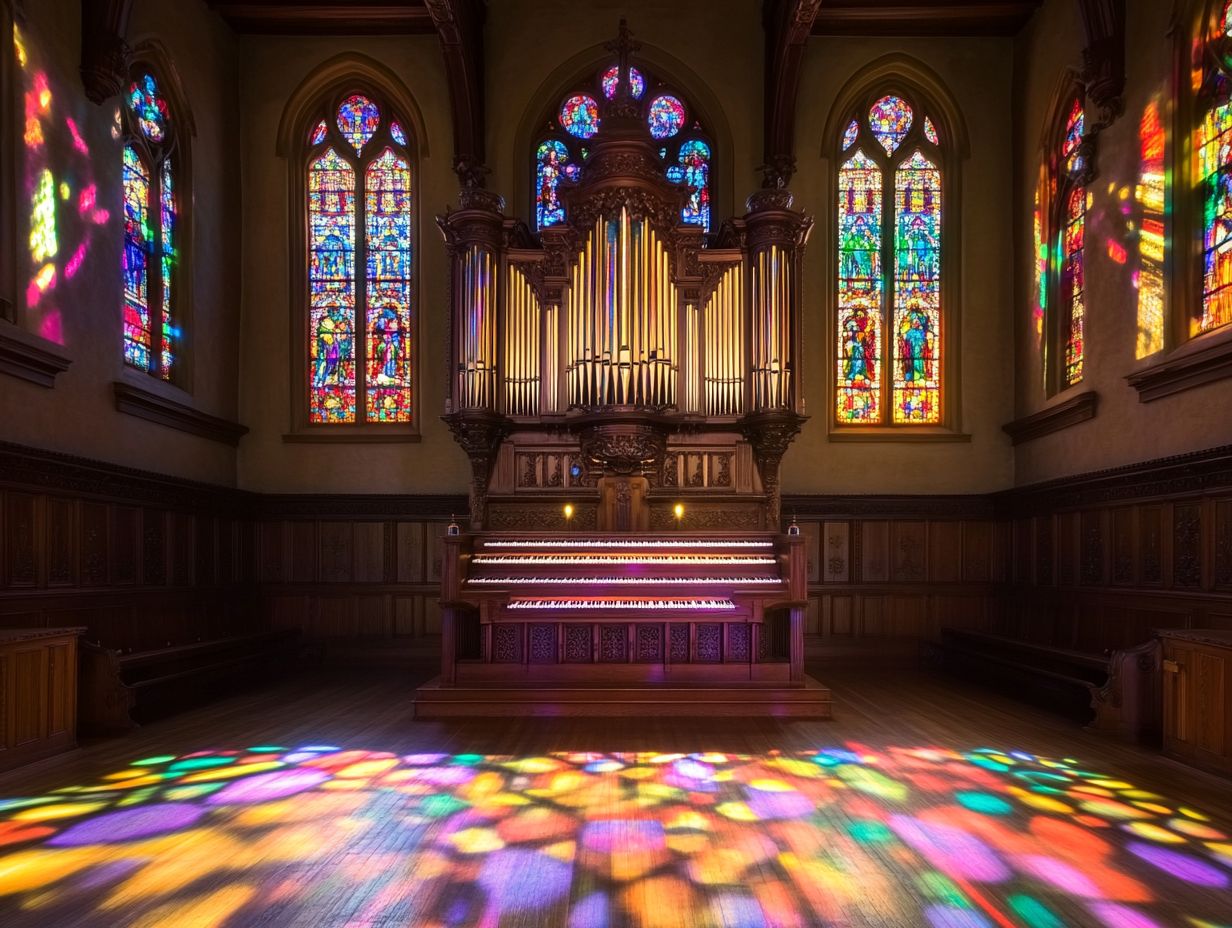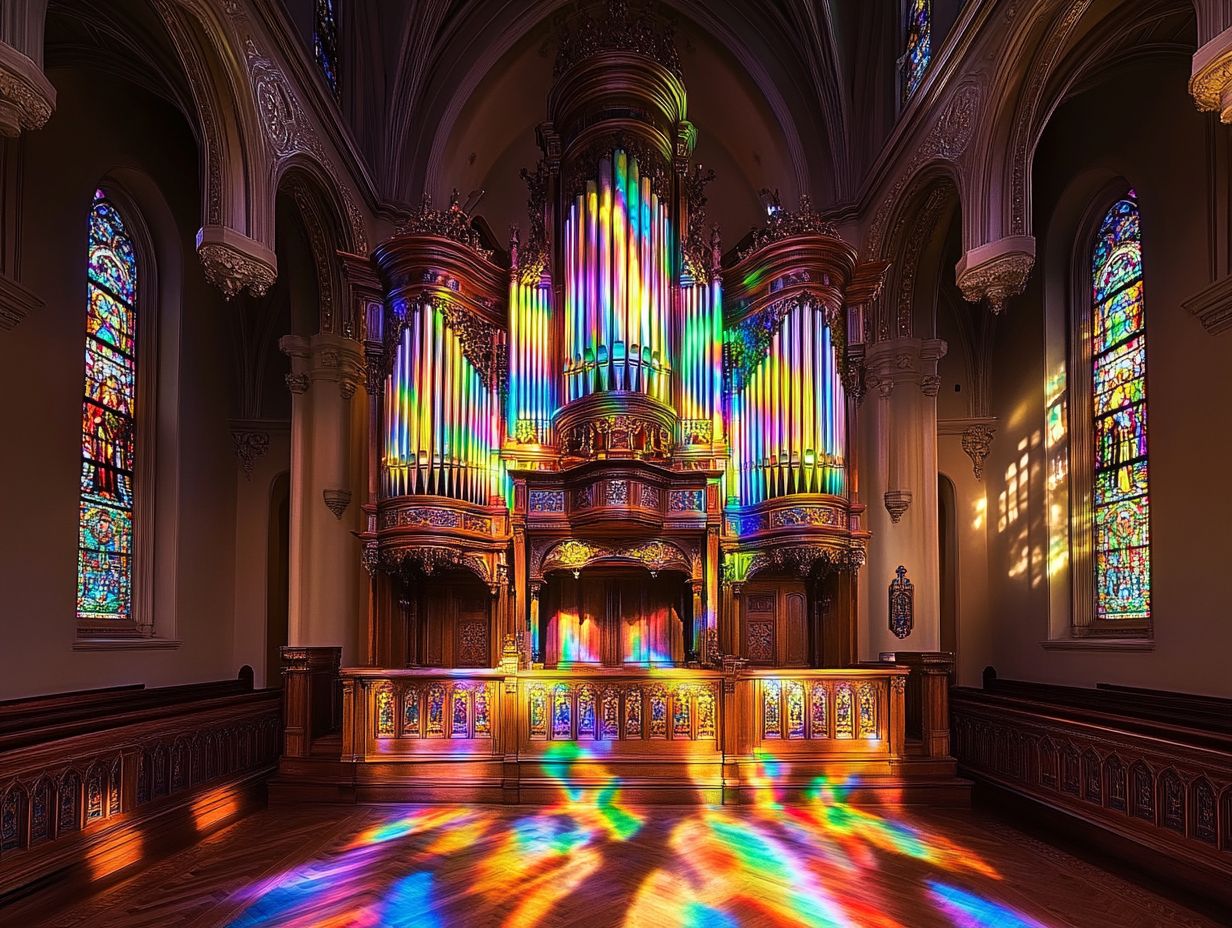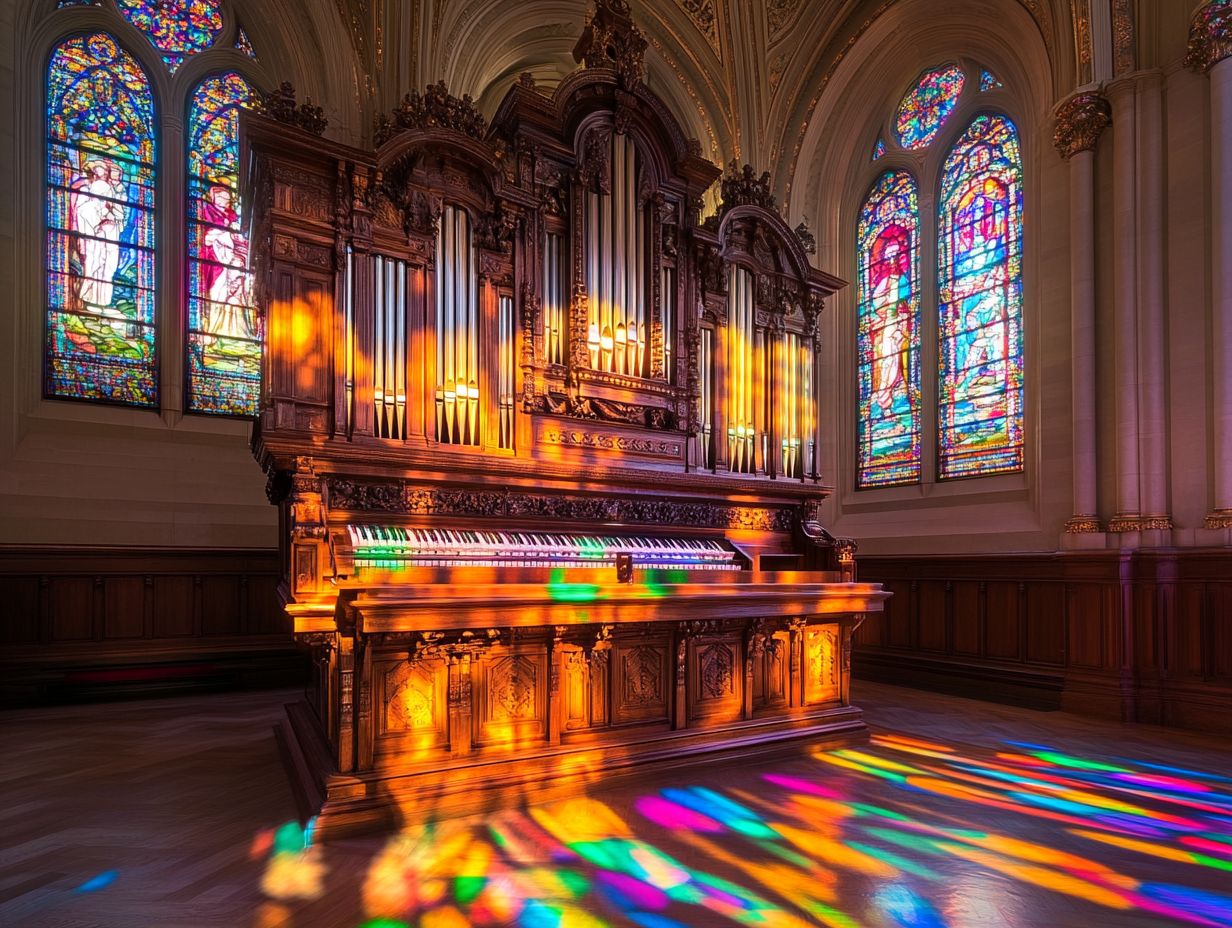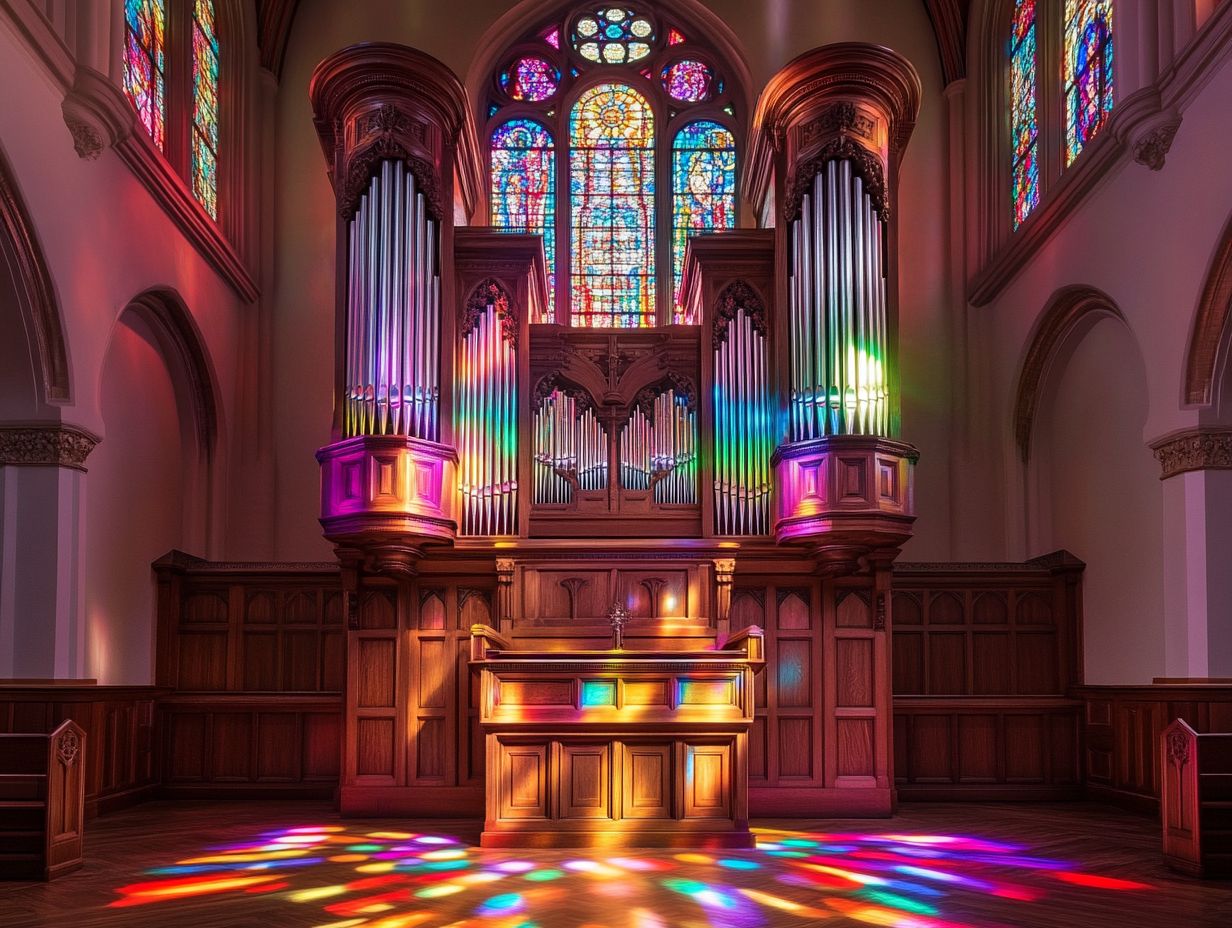The pipe organ, often referred to as the “king of instruments,” boasts a rich and fascinating history that encompasses its early origins and the remarkable innovations that have shaped its evolution.
This majestic instrument has played a pivotal role in both sacred and secular music.
This exploration will delve into the intricate components of the pipe organ, the craftsmanship involved in its construction, and the renowned organs that have left an indelible mark on the world.
Additionally, it will discuss how the organ has adapted to modern times and how it continues to thrive in the 21st century.
Contents
History of the Pipe Organ

The history of the pipe organ is complex and multifaceted, tracing its development from antiquity to its current status as a respected instrument in both sacred and secular contexts.
Originally developed in ancient Greece, the pipe organ has undergone significant transformations influenced by various cultures and musical traditions, which have contributed to its prominent place in music history.
The craftsmanship involved in organ building has enhanced the tonal quality and acoustics of these magnificent instruments, making them central to both church music and concert hall performances during the Baroque and Romantic periods.
Early Origins and Evolution
The early origins of the pipe organ can be traced back to the hydraulis developed by the ancient Greeks. Considered the first keyboard instrument to utilize pipes, the hydraulis generated sound through water pressure.
Over the years, this instrument underwent significant transformations, particularly during the Medieval and Renaissance periods when it gained popularity in churches and cathedrals. Its evolution continued, and thanks to the craftsmanship of skilled organ builders, the Baroque organ became a prominent fixture in religious services, inspiring a vast repertoire of organ music.
Significant Developments and Innovations
The pipe organ has undergone significant evolution throughout its history, particularly during the Baroque and Romantic periods, which greatly enhanced its functionality and sound quality.
These eras introduced elaborate designs for the instrument and transformed the ways in which musicians approached sound engineering and musical expression.
Components of a Pipe Organ

A pipe organ is a large and complex musical instrument renowned for its rich sound. The key components of a pipe organ include its pipes, soundboard, keyboards, pedalboard, and console.
Pipes and Their Function
The pipes of a pipe organ are responsible for sound production, vibrating to contribute various tonal qualities that define the organ’s characteristic sound. These pipes are made from different materials, such as wood and metal, each with its own unique tonal properties.
Wooden pipes are known for their warmer and mellower sound, while metal pipes are recognized for their brighter and more penetrating tones. The shape and size of the pipes also influence their tonal properties; larger pipes produce deeper and more resonant sounds, whereas smaller pipes generate higher pitches.
The organ utilizes stops to control sound production and determine which sets of pipes will be activated. By manipulating these stops, the organist can create a rich and complex sound texture.
Keyboards and Controls
Keyboards and controls are essential components of the pipe organ that enable the organist to utilize registration and pedalboard techniques to navigate the instrument’s tonal range.
The keyboards are typically arranged with multiple manuals, each offering different ranges of pitch and timbre. The pedalboard allows for the production of deep bass notes, making it integral to sound production.
Each control, such as stops, drawbars, and couplers, facilitates sound production in a specific manner. By mastering these techniques, organists can explore a wide array of musical expressions.
Construction of a Pipe Organ

The construction of a pipe organ is a meticulous process that demands exceptional craftsmanship and a deep understanding of materials. This careful attention ensures that each instrument can produce the majestic sounds characteristic of organ music.
Materials and Techniques Used
The materials and techniques employed in the construction of pipe organs are crucial in determining the instrument’s tonal quality and overall sound characteristics. Traditional pipe organs typically utilize materials such as wood, metal, and occasionally glass, each contributing unique properties to the sound.
Wooden pipes, crafted from various types of hardwood, produce warm and rich tones due to their density and resonance. In contrast, metal pipes, often made from alloys like tin and lead, deliver bright and clear notes that are ideal for melody lines.
The structural elements, including the soundboard, also influence how these tones project and blend, significantly affecting the overall sonic palette. Modern organ builders have built upon these traditional techniques by incorporating innovative materials, such as composites, which enhance durability and sound consistency, allowing for a broader range of dynamics and expression.
The Role of the Organ Builder
The role of the organ builder is crucial in the creation of a pipe organ, as it combines artistry with technical skill to produce instruments that are both functional and aesthetically pleasing.
This intricate process requires an extensive understanding of both traditional craftsmanship and modern organ technology. An organ builder must have a keen eye for design, ensuring that every detail enhances the overall acoustics and beauty of the instrument.
Additionally, they must be well-versed in the mechanics of the organ, from the careful placement of pipes to the precise tuning methods that bring the instrument to life. Balancing these responsibilities requires the builder to continuously adapt and innovate, leveraging advancements in technology while remaining faithful to the rich heritage of organ construction.
Famous Pipe Organs Around the World

The most renowned pipe organs in the world boast remarkable features, fascinating histories, and impressive venues, making them a vital part of the cultural heritage of organ music.
Notable Features and Performances
Some of the world’s most famous pipe organs are renowned for their exceptional craftsmanship and remarkable sound, which have made them stand out during performances throughout history.
For instance, the organ at the Basilica of Saint-Savin in France boasts over 4,000 pipes and features a highly decorated façade that complements the grandeur of the stately Romanesque architecture of the building. Similarly, the organ at Sydney’s Town Hall is celebrated for its rich, resonant tones, equipped with 10,000 pipes that produce a wide range of sounds, enhancing various musical performances.
Notable performances by renowned organists such as E. Power Biggs have elevated the profile of organ music, allowing modern audiences to appreciate its historical significance and emotional depth. These examples underscore the close relationship between the architectural magnificence of these instruments and the artistry they enable.
The Pipe Organ in Modern Times
The pipe organ remains relevant today and is utilized in contemporary musical styles and technologies, including digital organs found in modern performance spaces.
Continued Relevance and Adaptations
The continued relevance of the modern pipe organ is evident in its adaptation to various music genres, ranging from classical to contemporary, as well as its involvement in community outreach programs.
In recent years, the instrument has found a new voice in diverse settings, including jazz ensembles and popular music performances, which showcase its versatility and unique tonal qualities.
Innovative arrangements and collaborations have emerged, enabling artists and local musicians to explore the pipe organ beyond its traditional church confines. Community initiatives often feature workshops and concerts designed to introduce younger audiences to this majestic instrument, fostering appreciation and participation.
This engagement not only preserves the cultural heritage of the pipe organ but also encourages future generations to experiment with its sound across a variety of musical landscapes.
